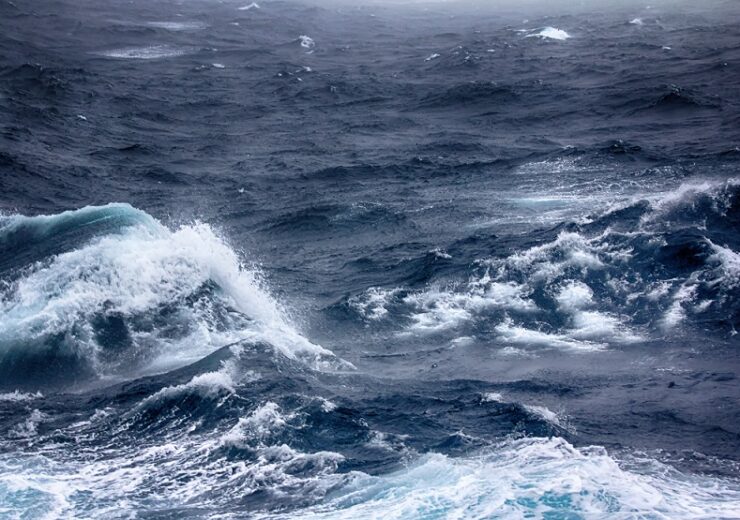Storm surges and large waves produced by hurricanes pose the greatest threat to life and property along the coast and offshore

The devastation unleashed by hurricanes can severely disrupt operations.
Over recent years, the number of tropical storms worldwide has steadily increased, posing fundamental challenges to companies whose offshore and nearshore assets sit in their path. Combined with the increased intensity of these storms, the devastation unleashed by hurricanes can severely disrupt operations and prove costly in both lost revenues and repairing the damage.
Storm surges and large waves produced by hurricanes pose the greatest threat to life and property along the coast and offshore. Particularly for those operating in key strategic offshore areas such as the Gulf of Mexico, where the risk posed by the annual hurricane season was already significant, it becomes critical to put in place the plans, procedures, and technology to ready and protect offshore assets.
To minimise disruption, and to plan for and quickly recover from hurricanes, organisations are implementing strategies to become more resilient to this growing threat. There is increasing evidence that organisations that plan for disruption and have the tools to respond quickly and adapt to events are ultimately more successful and profitable.
Overcoming planning challenges
In many cases, fixing issues out at sea is hard work and takes several resources. It is challenging in the case of wind components because they are already embedded, and operators cannot replace or fix them because they are installed well below the soil line. They have one attempt to get the piling right, and even if they had infinite resources and budget, there is a finite amount of space for this activity, with operators and governments all vying for space to create new offshore wind farms.
To alleviate the problem, reduce failure rates and ensure the equipment’s longevity, a more robust strategy for asset planning and upkeep is needed.
Suitable solutions to meet sustainability goals
In order to meet increasingly ambitious offshore and renewable energy targets, work will need to be done to modernise the platforms, support operations and port infrastructures required to keep offshore operations viable, and this is no small project. Net-zero emissions economy requires renewable energy to be deployed on an unprecedented scale, and there is an urgent need to improve and expand existing infrastructure.
One of the biggest issues in meeting these targets is a lack of port preparedness to support this kind of activity. Offshore wind installations depend on the draft of the jetties and port locations. These factors impact the type of structure you can install as well as its ongoing maintenance and operation, whether that’s barges, leg platforms or semi-submersibles. For instance, barges operate effectively at the quayside, but are unstable offshore and require a more extensive mooring system to keep them safely operational. In comparison, semi-submersibles can be used in multiple locations as they are robust and offer good mobility, however they may not be easily adaptable to differing operational environments and requirements.
Solutions for integrity and life extension of assets
How do operators of offshore assets work to reach targets while also ensuring the safe installation, operation and maintenance, as well as the considerations that come with being resilient against increasingly damaging extreme weather events?
The first and primary consideration is always safety. The more times companies have to send operators, divers and crew transfer vessels out to install, monitor and maintain assets, the more they risk people and resources being out in dangerous environments. With increasing levels of reliable, effective automated monitoring, there is much less need to send people and assets out into potentially dangerous environments.
The second consideration is budget. The number of teams and assets required to conduct maintenance operations depends on depth and number of assets, but these all come with mobilisation expenses and require highly skilled, experienced operatives to carry out inspection and maintenance works.
Implementing the right technology
Previously, with large singular assets, it would have made sense to apply an individual monitoring system. Now, multiple turbines are floating over a large surface area makes more expansive modelling systems far more economically viable to monitor the health of mooring lines and anchors, load, integrity, GPS positioning, and performance of the assets to understand their life expectancy.
Ocean conditions such as waves and current around the assets are monitored too, to understand the conditions the assets have been under and what impact the movement of the waves has had on them. BMT DEEP is a visualisation tool that enables teams to track real-time operations data from anywhere globally, with current conditions to see when a hurricane might be approaching and what the wave height is as it hits.
By harnessing the benefits of Digital Twin Technology, BMT DEEP captures data from tens of thousands of data points anywhere in the world transmitting these at speeds of up to 10 thousand Hertz/second, enabling operators to visualise and track their valuable physical assets in near real-time, getting up-to-the-minute status reports to help make informed decisions.
Combined with Analytics Studio, the team can drill down into the data to see historical occurrences, harnessing data that has been stored from monitoring extreme weather in the Gulf of Mexico, with wind patterns and storms. This can be used to predict future and long-term trends, which is invaluable for fatigue analysis of the assets that storms might have impacted over many years.
Looking ahead to the future of monitoring and preparedness
Creating practical linkages between climate data and predictions and the actual effects of real-time hazard events on asset integrity and performance is the level of detail that is critically missing from most climate risk assessments.
Data collection and analysis with quantitative mitigation tools creates a level of knowledge around climate risk that will drive sound decision-making and future investment, not only for individual companies but for industry-wide operations.
